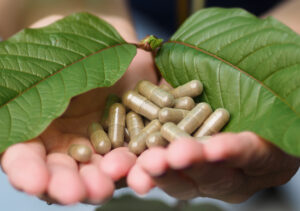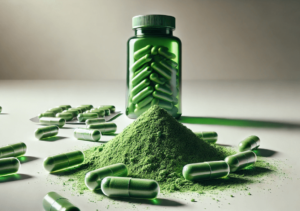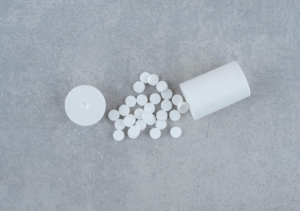Most people usually associate sports and exercise with a healthy lifestyle, and cannabis is not generally considered to be compatible with fitness.
But why is it that so many recreational and professional athletes use cannabis products before and after competitions?
To put this topic into a more objective perspective, here are 6 scientific reasons why smoking marijuana can be a good addition to your exercise routine.
Cannabis may relieve exercise-related pain
Cannabis is a well-known painkiller and has been used for treating acute and chronic pain by many people.
Several studies have proved that cannabinoids have the power to switch off the pain signals in our body (1) so we don’t feel it as much of it. In other words, marijuana makes the pain bearable.
Warning!
Please keep in mind that cannabis may help you numb the pain but it cannot heal injuries.
Untreated injuries can lead to more severe ones and can even develop into chronic pain, which can be very difficult to manage even with cannabis. Sometimes it’s better to just skip a day at the gym and rest.
Cannabis may protect the brain from injuries
In contact sports (boxing, hockey, football and the like) athletes are prone to head injuries like concussions.
If it’s a minor injury, it usually heals within a week or two.
However, severe concussions take longer to heal and can produce a range of symptoms.
When you suffer a blow to the skull, your brain starts swelling, which damages the brain cells and alters brain functioning.
Cannabinoids, like CBD, have anti-inflammatory properties and may help reduce the swelling in the brain. (2)
According to a 3-year UCLA retrospective study, the death rate among concussion patients who’ve had THC in their system at the time of their accident is much lower than the ones that didn’t have THC in them. (3)
Warning!
Be aware of how cannabis impacts you and the type of activity you are engaging in. If your sport requires fast reflexes, it’s better to smoke weed after and not before. You don’t want to end up with a brain injury because of cannabis-induced motor skill impairment.
Cannabis may boost metabolism
Although cannabis users consume up to 600 more calories per day than non-users, that extra fuel doesn’t have to necessarily turn into fat. (4)
It’s been scientifically proven that THC increases appetite in humans, thus making us consume more calories.
So how do so many seasoned cannabis users have tiny waists with next to no body fat?
Well, according to a 2016 study, marijuana users tend to have a better carbohydrate metabolism and are, in general, less obese than non-consumers. They also have lower fasting insulin levels and have a better insulin response. (5)
Although we still lack proper scientific research, early studies show that “prevalence of obesity is lower in cannabis users than in nonusers”. (6)
Cannabis may boost your focus (especially CBD)
Cannabis can be good when you need to focus on repetitive tasks, which is why so many recreational runners enjoy running while high. They argue that taking a few puffs before heading out for a long-distance run can make the run itself more enjoyable.
Can you just imagine running by the lake and being even more aware of the nature surrounding you? That kind of bliss can most likely aid your performance and make you run more than you’ve planned to.
Because pot helps you get into the zone, it’s a much-appreciated supplement among those who like to meditate and do yoga.
But please remember, if you want to get the focus you need, it’s all about choosing the right strain. Some strains could make you lazy and induce the couch-lock effect. But if you find the right sativa, with the right ratio of CBD to THC, you just might get the effect you’re looking for.
Warning!
Although cannabis can be good for repetitive activities, studies have shown that THC slightly decreases reaction time and impairs motor skills. (7) Sports that require quick reflexes should be performed completely clear-headed and not under the influence of high-THC cannabis products.
Cannabis may wipe away the pre-workout anxiety
Although high-THC cannabis can induce full-blown paranoia (usually happens in high doses), with high CBD products you can walk into the gym like a boss without being anxious.
Check out this Reddit thread for more anecdotal evidence on how CBD relieves anxiety and this Healthline guide on all the scientific evidence.
Cannabis may soothe sore muscles
You recently started working out and your first workout left you so sore that you wish you never went into the gym in the first place.
Luckily for you, CBD (cannabidiol) is proven to relieve inflammation in the body. Consuming a high-CBD product after your workout will make the soreness go away much faster. Also, by taking a dose of CBD before your activity you’ll avoid the soreness and pain in the first place.
Bonus tip: Runner’s high (get high without getting high on weed)
Weed and physical activities have much more in common than you think. And believe it or not, you can get high without smoking weed.
The phenomenon known as the “runner’s high” is the reason why many long-distance runners are in love with this activity. However, you can’t get it after two miles. No, for this high you have to work.
The first time I felt it was when I ran my first half marathon. When I reached the finish line, I had this rush of euphoria, motivation, and incredible satisfaction. It felt like I could keep on running forever.
After I’ve reached the finish line, I felt like I was high. And it was awesome.
I was not really sure what I was feeling, but this “high” triggered my curiosity and that’s when I found out about runner’s high.
Researchers from the University of Heidelberg found that the endocannabinoid system plays a major role in producing this effect. After running, our bodies produce chemicals called endocannabinoids — substances similar to cannabinoids found in marijuana. (8)
These endocannabinoids bind to the same receptors as chemicals found in marijuana, which helps explain why there are so many people obsessed with running and why so many runners love to smoke weed after a long run.
Summary
The most important thing to remember is to put safety first, at all times.
If you are a recreational athlete and are allowed to consume cannabis, make sure you take all concerns into account before getting high and working out. Let your local budtender help you choose the right strain that will keep you motivated and focused.
If you are a professional athlete, you should stay away from THC products and just stick to CBD, which has recently been removed from the World Anti Doping Agency banned substances list.
References
- Manzanares J, Julian MD, Carrascosa A; Role of the Cannabinoid System in Pain Control and Therapeutic Implications for the Management of Acute and Chronic Pain Episodes; Current Neuropharmacology; July 2006; 4(3):239–257
- Lopez-Rodriguez AB, Siopi E, Finn DP, Marchand-Leroux C, Garcia-Segura LM, Jafarian-Tehrani M, Viveros MP, CB1 and CB2 cannabinoid receptor antagonists prevent minocycline-induced neuroprotection following traumatic brain injury in mice, Cerebral Cortex, January 2015, 25(1):35-45.
- Nguyen BM, Kim D, Bricker S, Bongard F, Neville A, Putnam B, Smith J, Plurad D. Effect of marijuana use on outcomes in traumatic brain injury. The American Surgeon, October 2014, 80(10):979-83.
- Rodondi N, Pletcher MJ, Liu K, Hulley SB, Sidney S; Marijuana use, diet, body mass index, and cardiovascular risk factors (from the CARDIA study); The American Journal of Cardiology; August 2006; 98(4):478-84
- Penner EA, Buettner H, Mittleman MA; The impact of marijuana use on glucose, insulin, and insulin resistance among US adults; The American Journal of Medicine; Jul 2013; 126(7):583-9
- Strat YL, Foll BL; Obesity and Cannabis Use: Results From 2 Representative National Surveys; American Journal of Epidemiology; 174(8): 929–933
- Peeke SC, Jones RT, Stone GC; Effects of practice on marijuana-induced changes in reaction time; Psychopharmacology; July 1976; 48(2):159-63
- Fuss J, Steinle J, Bindila L, Auer MK, Kirchherr H, Lutz B, Gass P; A runner’s high depends on cannabinoid receptors in mice; Proceedings of the National Academy of Sciences of the United States of America; October 2015; 112(42):13105-8






Kateřina February 20, 2019 at 7:24 pm
Great article! Thanks a lot❤️
Helena February 21, 2019 at 3:34 pm
Thank you, Katerina! :)
Thoma June 11, 2020 at 5:37 pm
Hey Elena I got a question please!! Is it good after work out to smoke weed? Because I want to grow muscles amd I don’t know if is it gonna be good if i smoke weed??? Thank you for your respond 😁
Ana Stanojevic June 12, 2020 at 1:51 pm
Thoma, take a look at this article - it talks in more detail about muscle growth and how cannabis can help athletes in that respect. https://greencamp.com/cannabis-and-weightlifting/
Omar Barron May 2, 2019 at 4:16 pm
I really enjoyed the article very informative and just a good read!
Kyle June 11, 2019 at 4:44 pm
Great read! It helps me with the nausea after a good workout. Mid joint my mind switches from nauseous to hungry, and I'm able to eat or drink a shake.
Rich Solano September 3, 2019 at 8:18 pm
Wow this article was amazing. Thank you so much for spreading truth and positivity about cannabis, there are not many of us out there. I am a cannabis advocate developing a platform with my team to change the negative stigma that cannabis currently carries. We too are spreading truth and positivity about cannabis. We go on IG Live every other week with professionals and share truth and knowledge with our audience. This last Live that we did, we had a Professional Life and fitness coach who is filled with knowledge; furthermore, this article helped me prepare for our IG Live. Thank you for that. Also, if you are curios about this live give me a follow @bd.rich